
Boraginaceae, the borage or forget-me-notfamily, includes about 2,000 species of shrubs, trees and herbs in 146, to 156 genera with a worldwide distribution.
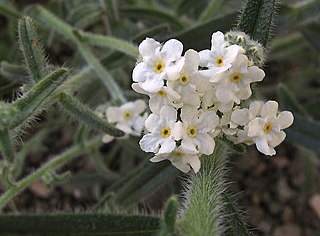
Cryptantha is a genus of flowering plants in the borage family, Boraginaceae. They are known commonly as cat's eyes and popcorn flowers. They are distributed throughout western North America and western South America, but they are absent from the regions in between.

Claytonia is a genus of flowering plants native to Asia, North America, and Central America. The vitamin-rich leaves can be eaten raw or cooked, and the tubers can be prepared like potatoes.
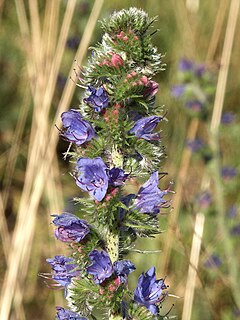
Boraginales is an order of flowering plants in the asterid clade. It includes the Boraginaceae and a number of other families, with a total of about 125 genera and 2,700 species. Its herbs, shrubs, trees and lianas (vines) have a worldwide distribution.
Hoplestigma is a genus of flowering plants in the family Hoplestigmataceae. One study of pollen suggested that Hoplestigma might be related to the family Ehretiaceae. In a comparison of chloroplast DNA sequences in 2014, Hoplestigma formed a strongly supported clade with Coldenia and genera that have always been placed in Cordiaceae. The authors of that study recommended that Hoplestigma and Coldenia be included in Cordiaceae.

Tiquilia is a genus of flowering plants in the borage family, Boraginaceae. The 27 species in this genus are known by the common name crinklemat. They are native to the Western Hemisphere and are mostly found in desert regions.
Wellstedia is a genus of flowering plants traditionally included in the family Boraginaceae s.l., but placed in its own family, Wellstediaceae within the Boraginales order, by the Boraginales Working Group.

I. M. Johnston, was a United States botanist. He studied at Pomona College in Claremont, California and at Harvard University. His plant collections are housed in the Rancho Santa Ana Botanic Garden, in Claremont, and also in the Gray Herbarium of Harvard University.

Perityle is a genus of flowering plants in the daisy family. They are known generally as rock daisies.

Johnstonella angustifolia is a species of wildflower in the borage family known by several common names, including Panamint catseye and bristlelobe cryptantha. This plant is native to northern Mexico and the southwestern United States from California to Texas, where it grows in desert scrub and woodland.
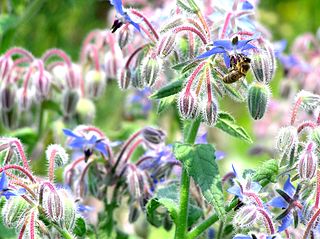
Boraginoideae is a subfamily of the flowering plant family Boraginaceae s.s, with about 42 genera. That family is defined in a much broader sense in the Angiosperm Phylogeny Group (APG) system of classification for flowering plants. The APG has not specified any subfamilial structure within Boraginaceae s.l.
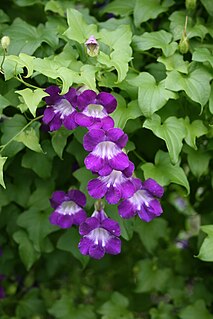
Maurandya is a genus of flowering plants in the family Plantaginaceae, native to Mexico and the south west United States. They sprawl or climb by means of twining leaf stalks. One of the four species, Maurandya barclayana, is widely cultivated as an ornamental plant.

Codon is a small genus of plants from South Africa in the family Codonaceae in the order Boraginales. The genus Codon comprises two species.

Coldenia, named after C. Colden, is a monotypic genus of flowering plants traditionally included in the borage family, Boraginaceae sensu lato. It was assigned to the subfamily Ehretioideae, but molecular data revealed it to be more closely related to the genus Cordia, so that other authors placed in Cordioideae. Subsequently, it was placed in its own family, Coldeniaceae, within the Boraginales order, by the Boraginales Working Group.

Euploca is an almost cosmopolitan genus of plants with around 100 species. It was first described by Thomas Nuttall in 1837. While part of the broadly defined Boraginaceae in the APG IV system from 2016, a revision of the order Boraginales from the same year includes Euploca in the separate family Heliotropiaceae. Its species used to be classified in the genera Hilgeria and Schleidenia and in Heliotropium sect. Orthostachys, but were found to form an independent lineage in a molecular phylogenetic analysis, more closely related to Myriopus than to Heliotropium. While many species use the C4 photosynthetic pathway, there are also C3–C4 intermediate species. Species have leaves with a C4-typical Kranz anatomy.
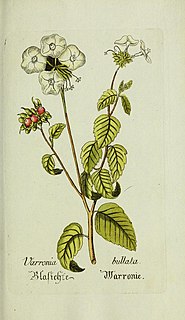
Varronia is a genus of flowering plants in the family Boraginaceae, found throughout Latin America, the Caribbean, and in the US states of Texas and Florida. They were resurrected from Cordia in 2007.
Antiphytum, commonly known as saucerflower, is a genus of flowering plants belonging to the family Boraginaceae.
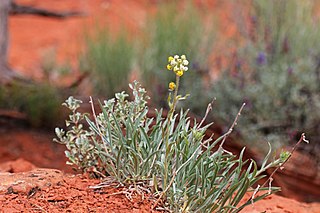
Oreocarya is a genus of flowering plants in the family Boraginaceae. There are about 63 species and its native range extends from western and central Canada, through western United States to north Mexico. It is part of subtribe of Amsinckiinae.
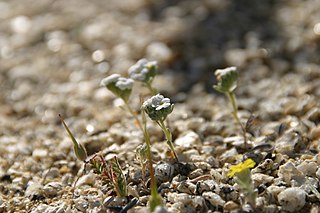
Eremocarya is a genus of flowering plants in the family Boraginaceae. There are about 63 species and its native range extends through western United States to northwestern Mexico. It is part of subtribe of Amsinckiinae.














